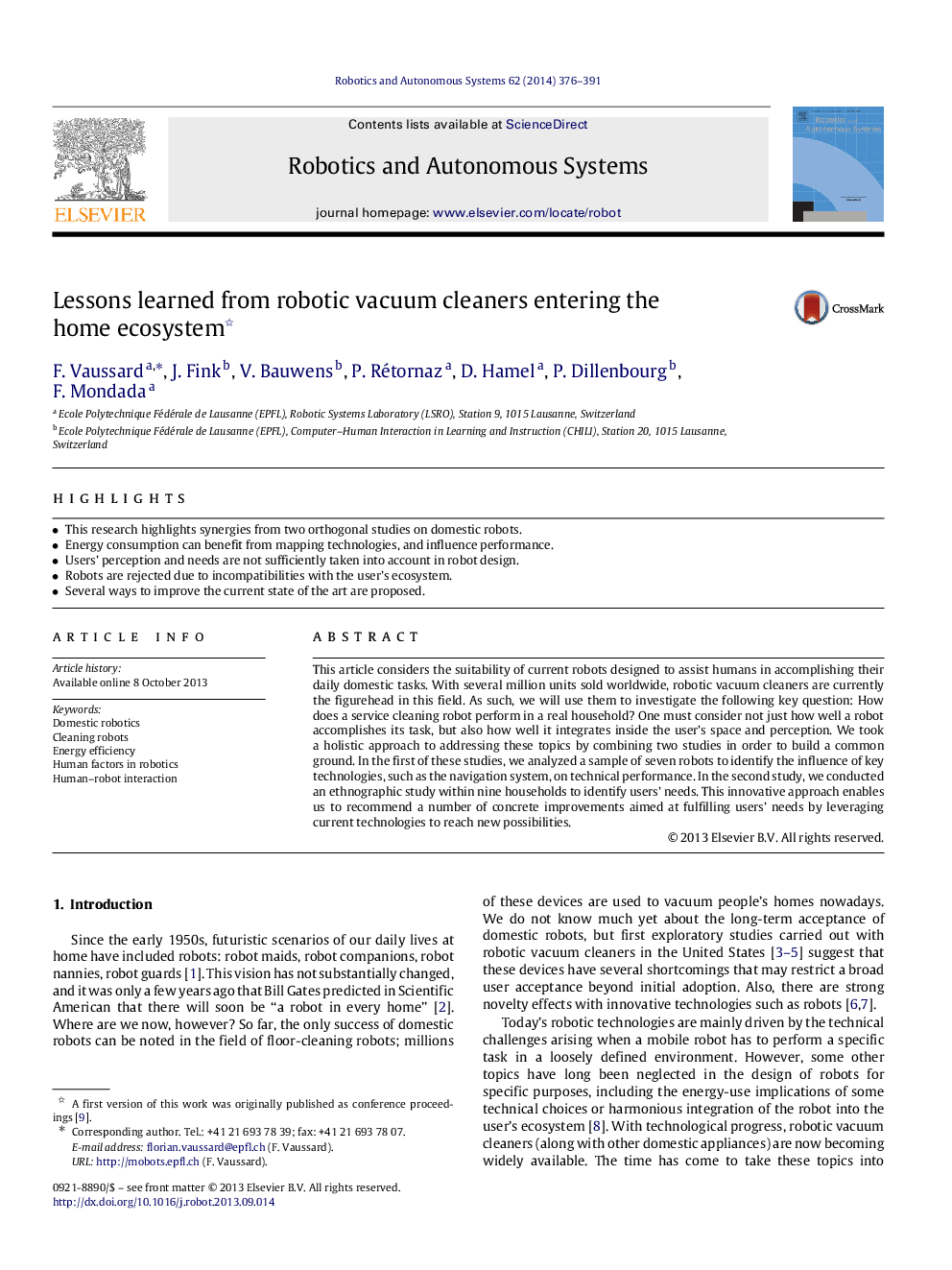| Article ID | Journal | Published Year | Pages | File Type |
|---|---|---|---|---|
| 412564 | Robotics and Autonomous Systems | 2014 | 16 Pages |
•This research highlights synergies from two orthogonal studies on domestic robots.•Energy consumption can benefit from mapping technologies, and influence performance.•Users’ perception and needs are not sufficiently taken into account in robot design.•Robots are rejected due to incompatibilities with the user’s ecosystem.•Several ways to improve the current state of the art are proposed.
This article considers the suitability of current robots designed to assist humans in accomplishing their daily domestic tasks. With several million units sold worldwide, robotic vacuum cleaners are currently the figurehead in this field. As such, we will use them to investigate the following key question: How does a service cleaning robot perform in a real household? One must consider not just how well a robot accomplishes its task, but also how well it integrates inside the user’s space and perception. We took a holistic approach to addressing these topics by combining two studies in order to build a common ground. In the first of these studies, we analyzed a sample of seven robots to identify the influence of key technologies, such as the navigation system, on technical performance. In the second study, we conducted an ethnographic study within nine households to identify users’ needs. This innovative approach enables us to recommend a number of concrete improvements aimed at fulfilling users’ needs by leveraging current technologies to reach new possibilities.
